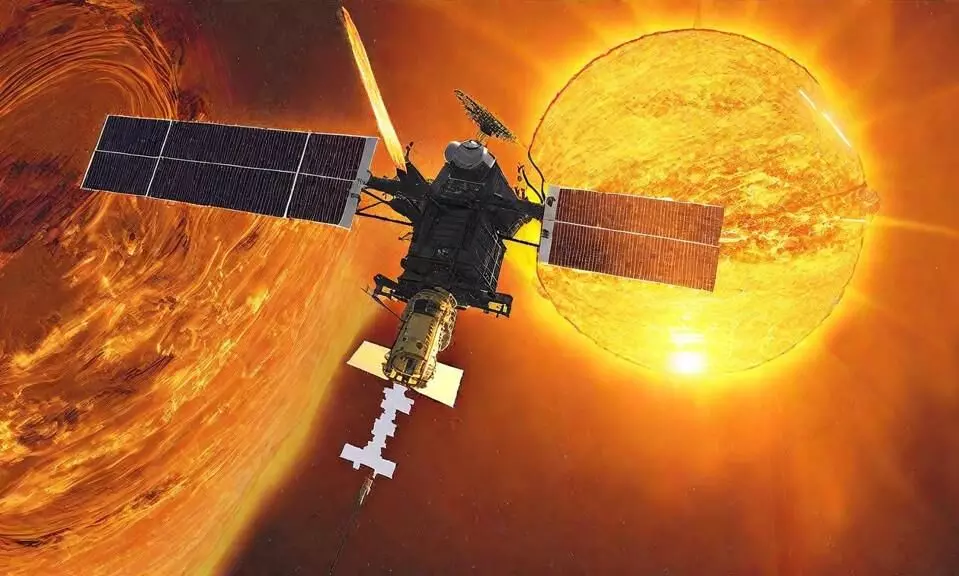
ISRO's Aditya-L1 secures strategic orbit, ready to illuminate solar mysteries
text_fieldsThe Indian Space Research Organisation's (ISRO) Aditya-L1 mission has successfully reached its designated orbit around Lagrange point 1 (L1) after a four-month journey from Sriharikota.
The nearly 1,500 kg satellite, constructed at a cost of ₹400 crore, is now positioned approximately 1.5 million kilometres from Earth, ready to embark on its mission to study the sun.
Scheduled for final insertion at 4 pm on Saturday, the Aditya-L1 will orbit the Lagrange point 1, ensuring an unobstructed view of the sun, free from eclipses. This strategic location allows the space observatory to continuously monitor the sun, providing valuable data on changing space weather.
One of the primary objectives of Aditya-L1 is to serve as India's first space-based observatory dedicated to studying the sun's dynamics. The satellite will play a crucial role in warning scientists about potential solar storms and flares that could impact satellite operations and other critical systems.
ISRO Chairman S Somanath emphasized the importance of the Aditya-L1 mission in protecting India's space assets, valued at over ₹50,000 crores. The continuous observation of the sun will enable early detection of solar electromagnetic effects, allowing for preventive measures to safeguard satellites and other communication networks.
The Aditya-L1 satellite is equipped with seven payloads, including electromagnetic, particle, and magnetic field detectors. These instruments will facilitate scientific experiments to better understand various aspects of the sun, such as the photosphere, chromosphere, and the outermost layers, known as the corona.
Key scientific objectives of the Aditya-L1 mission include studying solar upper atmospheric dynamics, investigating chromospheric and coronal heating, and observing in-situ particle and plasma environments. Additionally, the mission aims to explore the physics of the solar corona, identify the sequence of processes leading to solar eruptive events, and examine magnetic field topology in the solar corona.
The successful launch of Aditya-L1 marks a significant milestone in India's space exploration efforts, positioning the country as a key player in solar observation and space weather monitoring. The invaluable data gathered by the satellite is expected to contribute to global scientific knowledge and enhance our ability to predict and mitigate the impact of solar phenomena on Earth's technological infrastructure.























